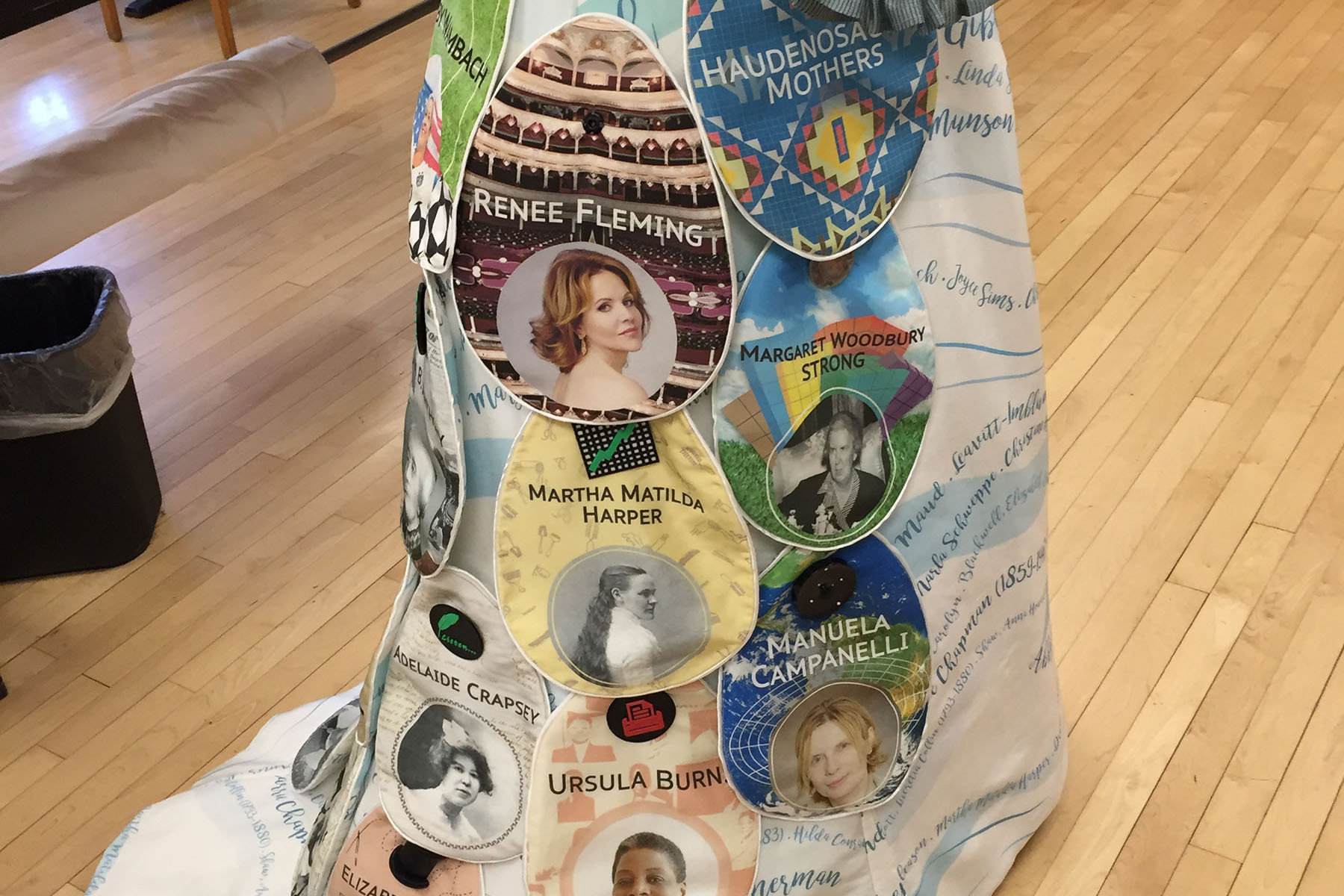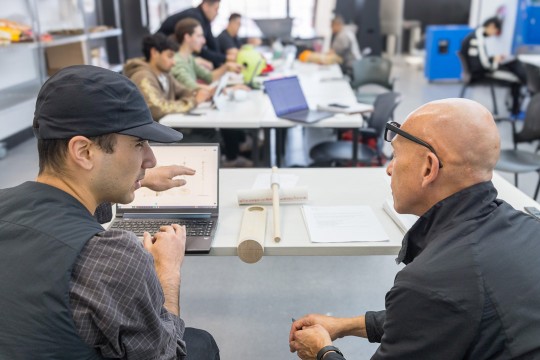Dressed for the success of women in Rochester
Marla Schweppe
This semester, an elaborate silk dress with 3D-printed buttons that is the brainchild of a trio of College of Art and Design faculty and depicts and honors the history of women in Rochester was completed.
The charming Women of Rochester Dress displays examples of printing on fabric and has the names of over 100 famous females who have strong ties to or were born in Rochester, such as Susan B. Anthony, former U.S. soccer star Abby Wambach and Kate Gleason. Some of the more well-known women are represented with special photo panels.
The dress celebrates 2017 being the 100th anniversary of women receiving the right to vote in New York State and will be shown to the masses next month at Imagine RIT, set to run all day on May 6 across campus. It will be exhibited in Webb Auditorium in Booth Hall during the festival.
In 2015, Marla Schweppe (3D digital design chair), Shu Chang (Melbert B. Cary Jr. Distinguished Professor in the School of Media Sciences) and Christine Heusner (Media Sciences lecturer and grad director) were awarded a Provost’s Learning Innovations Grant (PLIG) to start and develop a one-credit, multidisciplinary course. They joined forces to teach the spring 2016 class, which is where the idea to make the unique article of clothing formed.

“Turns out that Christine Heusner already had experience printing on fabric and Shu Chang had experience with electronics and 3D printing so we had a good team,” Schweppe said.
The instructors weren’t the only diverse group.
“We had students from across campus and ironically none of them were from our programs,” Schweppe said.
It was an involved undertaking, with the dress-making process starting in last spring’s course and ending this year.
In the development of the dress, a variety of techniques were applied, including: printing on fabric and acetate, using traditional, hydro-chromic, photochromic, thermo-chromic, electro-luminescent, conductive and glow-in-the-dark inks, and inkjet and screen printing. The course also incorporated 3D-printed buttons using a range of printing materials and electronics — microprocessors, LEDs, a speaker and more.
The dress demonstrates all of the techniques and processes that were used in its production. And now, it appears Schweppe, Chang and Heusner are ready to advance their teachings even further.
They received another PLIG this year — worth $3,957 — to develop a larger, three-credit course in 2D and 3D printing for soft goods. They’re looking to incorporate content in design, technology and electronics, so it will again appeal to students in many areas of study.
The grant money will be used to purchase screens, inks, substrates and electronic components, according to Schweppe, who anticipates the new class to be offered next spring.
“We are thankful to the provost and our chairs for supporting this work,” Schweppe said. “The dress project turned out to be a lot more work than anticipated, but the whole team stuck with it and I think we all feel really good about the results. We learned a lot. I can’t imagine better people to work with and I am so thankful to be at RIT with such incredible colleagues.”
There were many involved in the process of making the unique, creative dress, which was showcased at the 2017 United State Institute of Theatre Technology in St. Louis, Mo.
The creation took the diligence and talents of many. Print media graduate students Nuchjarin Pareeratanasomporn and Chandramohan Seetharamiah Srinibasaraju and SUNY Brockport professor and costume designer Gail Argetsinger are Imagine exhibitors, in addition to Schweppe, Chang and Heusner, for their contributions to the project.
The RIT students who helped with all aspects of the dress include Amanda Carroll, Pawan Padmakar Khake, Sanyukta Sanjay Hiremath, Matthew Sisson, Luca Verdi, Dakota Bolt, Mitch Morgan and David Cohen. Two of Argetsinger’s students from Brockport, Kathleen Gibbons and Morgan Perrin, also pitched in.
Denis Cormier, the Earl W. Brinkman Professor in RIT’s industrial and systems engineering program, assisted in the completion of some of the buttons on the dress. A couple of other School of Media Sciences employees — premedia facilities coordinator Erich Lehman and digital printing technologist John Eldridge — also had roles in the project.
With all of the helping hands, Schweppe said they were able to test and document the processes, and that knowledge can now be used in future courses.
The research and development of the dress was also supported by a National Science Foundation ADVANCE grant and the Cary Endowment. Schweppe credits Chang for making that possible.







